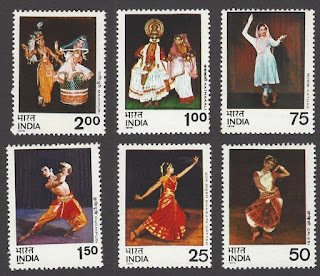Dadasaheb Phalke, born on 30 April
1870, in Trimbak, British India [now
in Maharashtra, India], was a Motion picture director who is considered the
father of the Indian cinema. Phalke was credited with making India’s first indigenous
feature film and spawning the burgeoning Indian film industry today chiefly
known through Bollywood productions.
As a child, Phalke displayed
great interest in the creative arts. Determined to pursue his dreams, he joined
the Sir J.J. School of Art, Bombay (now Mumbai), in 1885. While there he
pursued a variety of interests, including photography, lithography,
architecture, and amateur dramatics, and he became adept even at magic. He
briefly worked as a painter, a theatrical set designer, and a photographer.
While working at the lithography press of celebrated painter Ravi Varma,
Phalke was significantly influenced by a series of Varma’s paintings of the Hindu
gods, an impression that was evident in Phalke’s own portrayal of various gods
and goddesses in the mythological films he later made.
In 1908 Phalke and a partner
established Phalke’s Art Printing and Engraving Works, but the business failed
because of differences between them. It was Phalke’s chance viewing of the
silent film The Life of Christ (1910)
that marked a turning point in his career. Deeply moved by the film, Phalke saw
it as his mission to bring all that was Indian to the moving picture screen. He
went to London in 1912 to learn the craft from British pioneer filmmaker Cecil
Hepworth. In 1913 he released India’s first silent film, Raja
Harishchandra, a work based on Hindu mythology. The film, scripted,
produced, directed, and distributed by Phalke, was a huge success and an
important milestone in Indian cinematic history. Likewise important, he
introduced a female actor in the leading role in his film Bhasmasur
Mohini (1913) at a time when professional acting was taboo for
women.
Phalke, with the help of several partners, established the
Hindustan Film Company in 1917 and went on to produce several films. A talented
film technician, Phalke experimented with a variety of special effects. His
employment of mythological themes and trick photography delighted his audience.
Among his other successful films were Lanka dahan (1917), Shri Krishna janma (1918), Sairandari (1920), and Shakuntala (1920).
With the introduction of
sound in cinema and the expansion of the film industry, Phalke’s work lost
popularity. He left filmmaking in the 1930s and died lonely, embittered, and
sick.
In recognition of Phalke’s contribution to the Indian cinema,
the India government instituted the Dadasaheb Phalke Award in 1969, an award
presented annually by the president of India for lifetime contribution to
Indian cinema.























